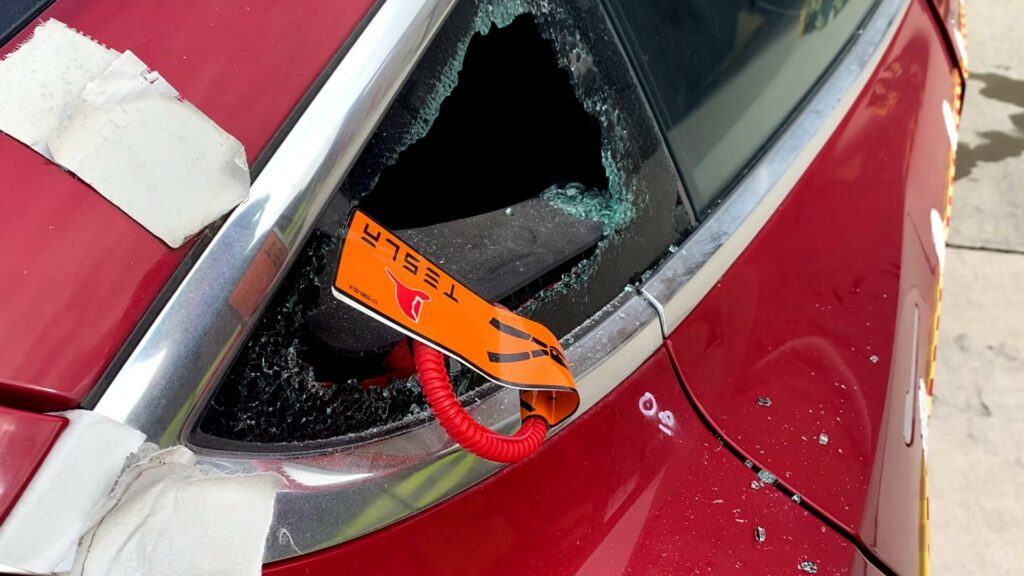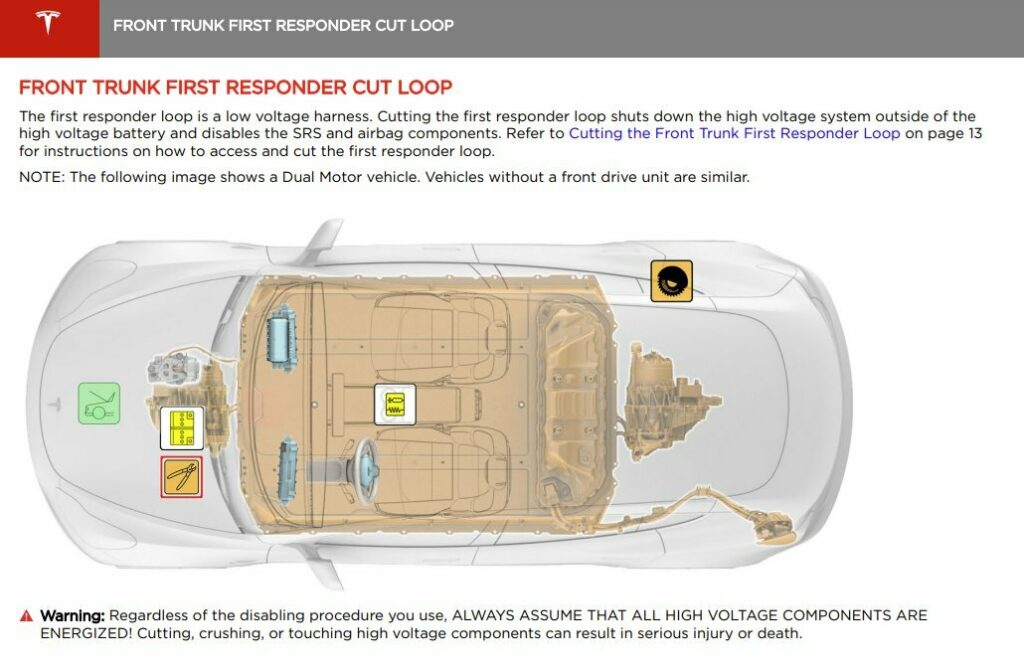- Quick Look at the 2020 Volkswagen Atlas Cross Sport | MotorTrend - March 13, 2024
- BMW Design – 2009 BMW Z4 – 2009 Detroit Auto Show - March 11, 2024
- Top 10 Car Features Women Love - October 7, 2023
Besides the special cable under the bonnet, there is a second location in the rear window, allowing first responders to disengage the high voltage system
1 hour ago

by Thanos Pappas
Electric cars may have plenty of advantages compared to combustion-engined vehicles but they also bring new challenges in terms of how the technology must be treated in the case of an accident. Extrication specialists undertake special training for EVs, uncovering the areas they should pay attention to. One of them is the location of the special cables that need to be cut in order to shut down the high-voltage system.
A video uploaded on a Facebook Page called Next Level Extrication proves how easy it is for a trained individual to shut down the system. First, you need to break the rear quarter window on the passenger side of the Tesla Model 3. Then all you have to do is remove the interior trim and reveal the red cable with the orange label. Double-cutting this cable will ensure that the high-voltage is disconnected, making the first responder’s work safer.
Read: Norwegian Shipping Company Bans Electrified Vehicles Over Fire Fears
Tesla, Rivian, and BMW are some of the automakers that offer two different locations to shut down the high-voltage system in their EVs. In the pictured Tesla Model 3 (as well as in the Model Y, S, X) the easiest location is the one below the front hood, which can be accessed without damaging any part of the vehicle. The red cable under the hood looks exactly the same, featuring an identical orange tag so it can be easily distinguished from other cables.
While the under-the-bonnet spot for the high-voltage extrication in EVs is pretty standard practice, having a second spot is convenient in a case of a serious accident where deformation can make it not easily accessible. As reported by Next Level Extrication, in Rivian models the cables are also located under the interior trim in the passenger-side C-pillar, while BMW EVs have them in the charging port.
Below you can watch two informative videos that work as extrication guides for the Tesla Model 3 and Model X. Both of them suggest that even when first responders double-cut the dedicated cables, they should never assume that high-voltage has been completely disconnected, treating all HV components with special care at all times.
advertisement scroll to continue

